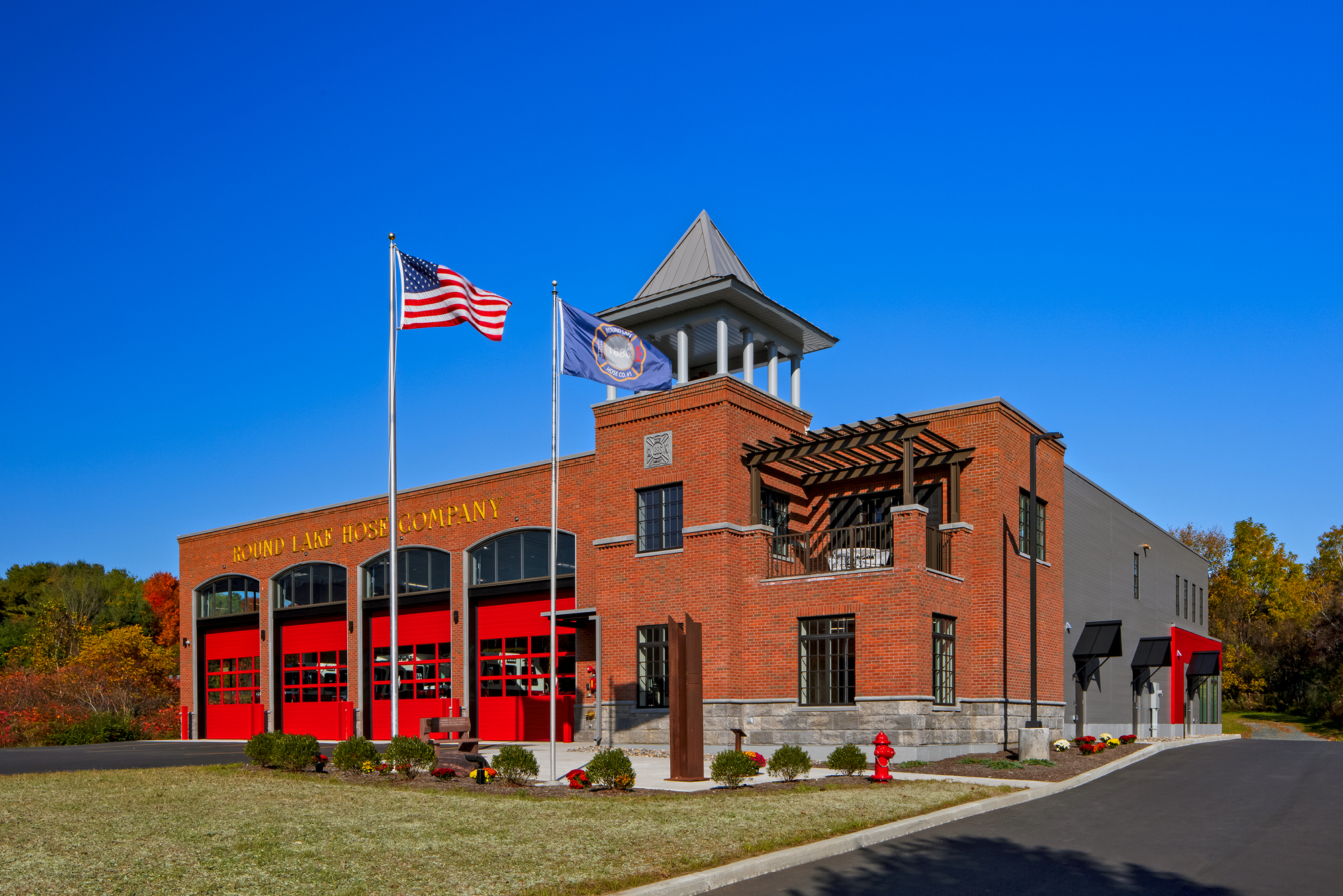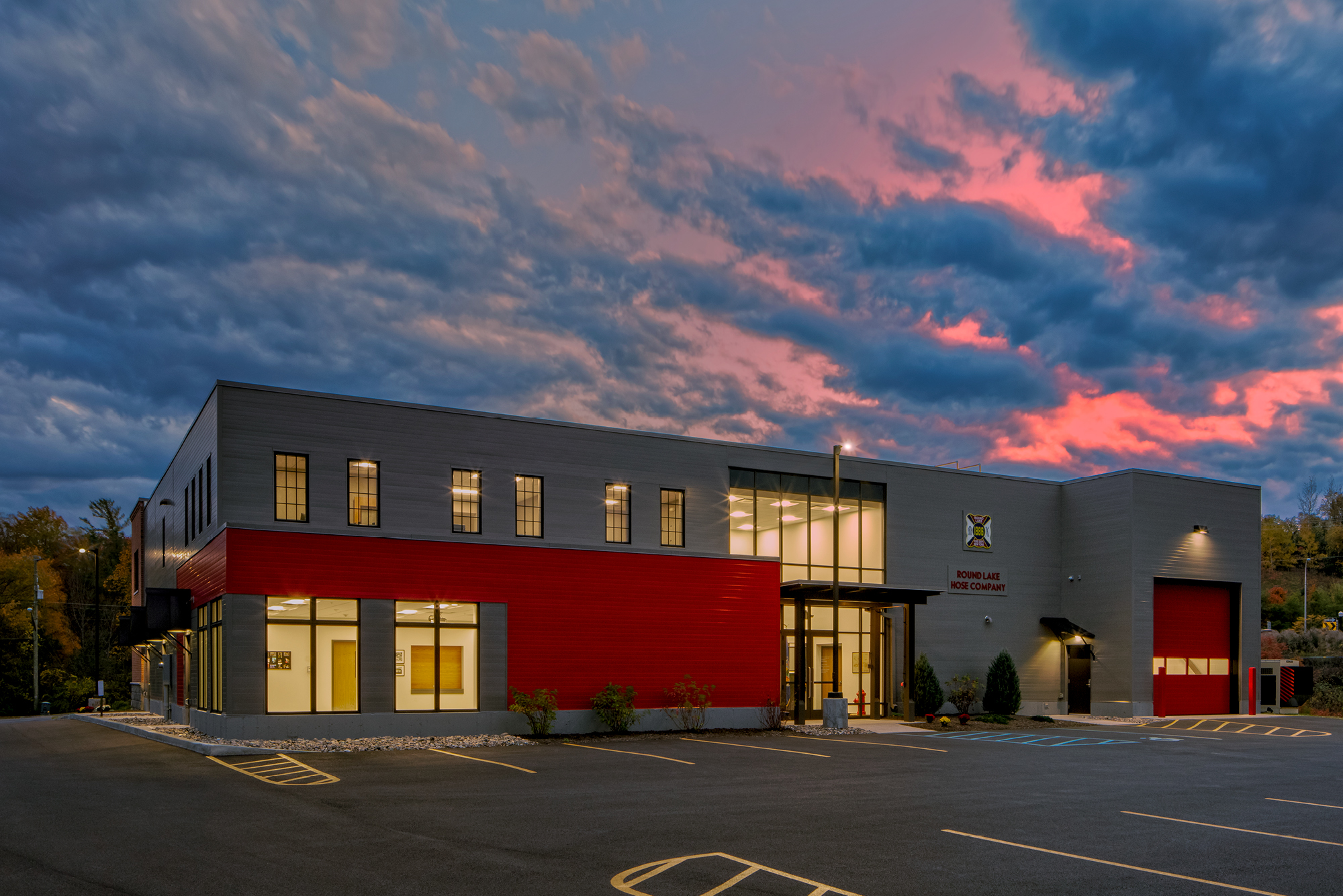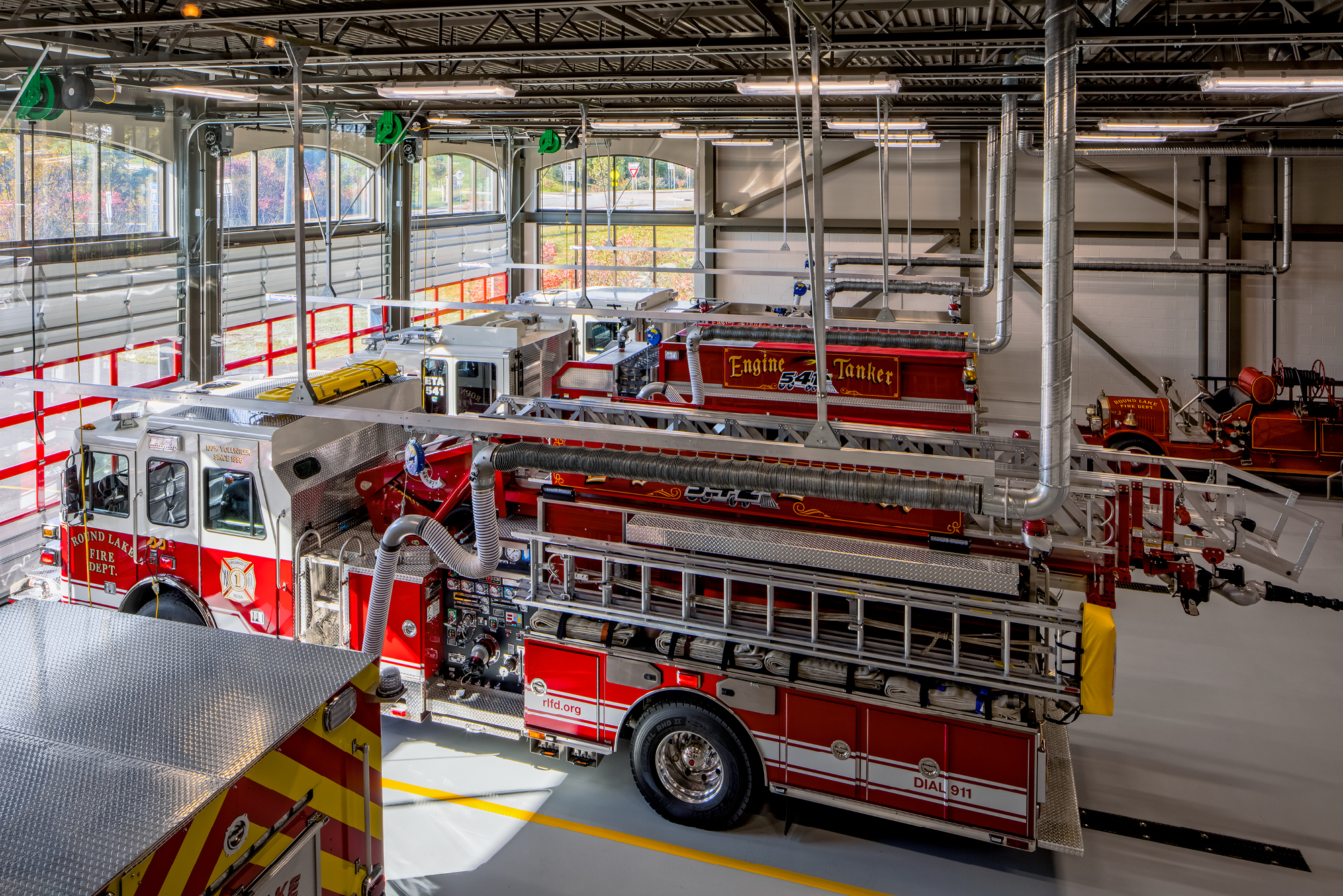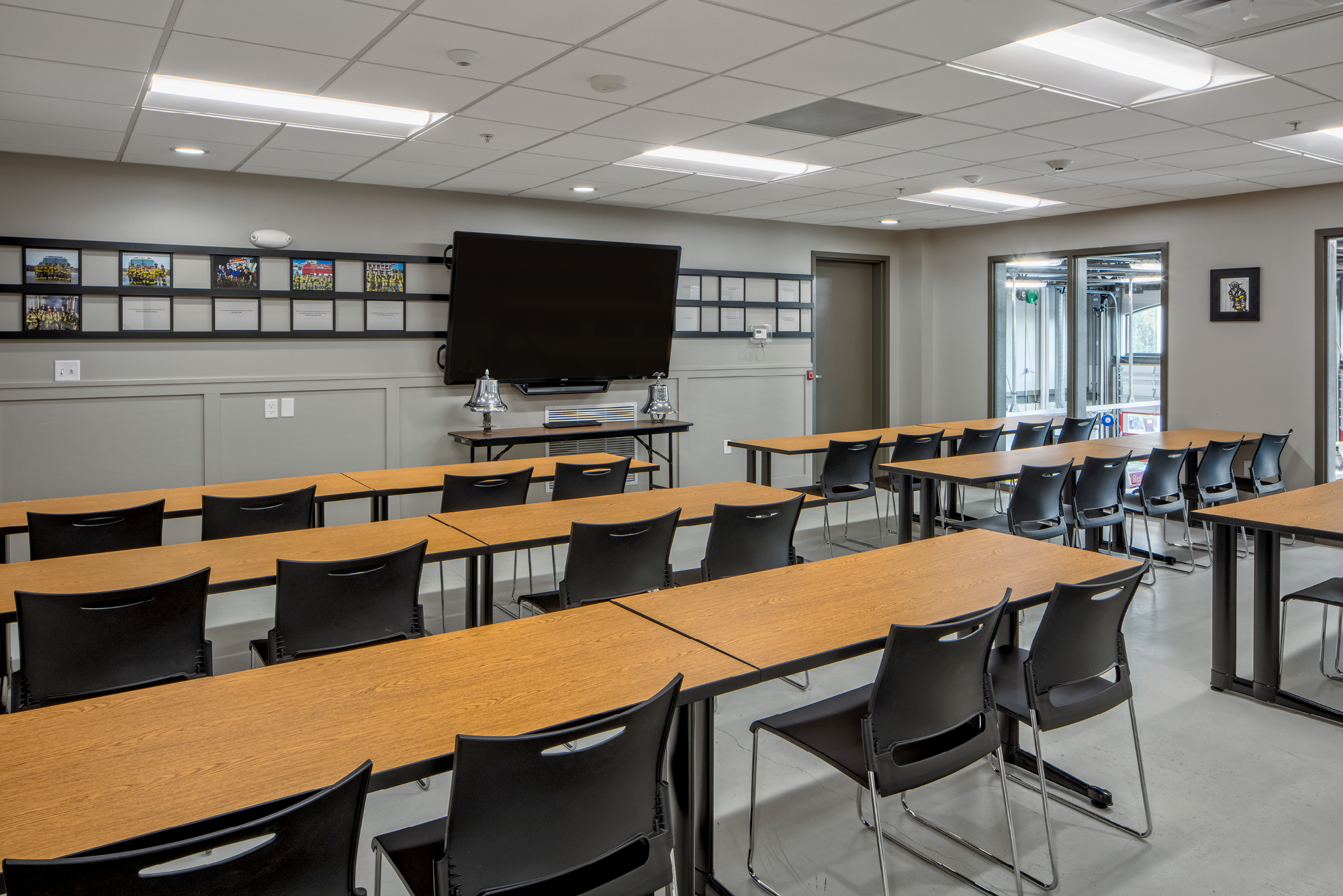Round Lake Fire Department
FIRE HOUSE DESIGN IN ROUND LAKE, NY
Located along the entrance to the Village of Round Lake, the Fire Station had been built in the 1970s. Balzer & Tuck was hired to design a new station to meet the needs of a 21st century fire department that created a gateway to the historic village, once a Methodist camp.
“From my perspective, we have one of the best appearing, most appropriately sized, and functional fire stations in the Capital District. And we (the building committee, architect, and contractor) were able to accomplish this at a fraction of the costs incurred in other jurisdictions.” – Fred Sievers, Assistant Safety Officer / Building Committee
Key Challenges and Solutions
- The street façade borrows forms, materials and proportions from the historic architecture found within the Victorian village, welcoming visitors as they pass by, while the rear of the building is composed of a simpler, more modern design.
- The plan was arranged to provide first responders with quick access from the parking lot to their gear in the Locker Room and then on to the apparatus in an effort to reduce response times.
- Decontamination of the apparatus and gear was critical for the health of the firefighters. A Decon Room with a shower, gear extractor and gear dryer was placed between the Apparatus Bays and the Locker Room so that the firefighters can remove their gear and any contaminants before heading home to their families. The Locker Room is equipped with its own filtration system to keep the gear safe until needed again.
- A Community Room with a Kitchen was provided for department meetings and is available to local non-profit organizations.
- A Firefighter’s Room was provided as a space for the volunteers to gather, with views from the second floor into the Apparatus Bay and a balcony overlooking the street.
- The public and private areas of the station were separated to prevent the spread of contaminants to visitors. With separate HVAC systems, the public areas are under positive pressure while the private, firefighter areas are under negative pressure, preventing contaminants from spreading throughout the building.
Check out the story in Fire Apparatus & Emergency Equipment Magazine
Related Projects









